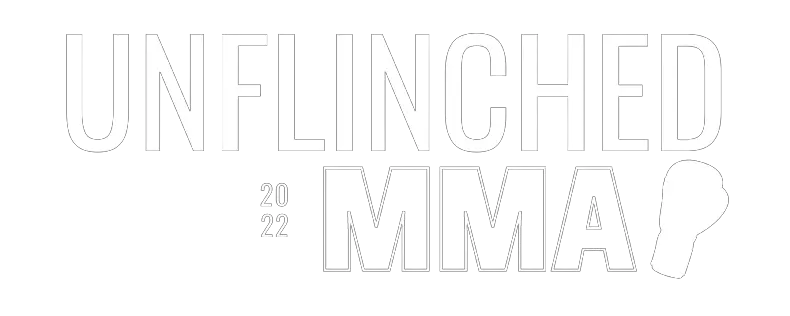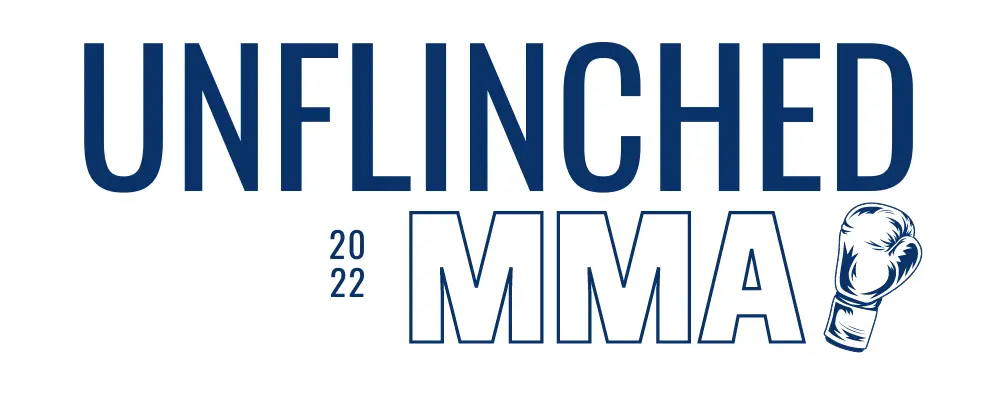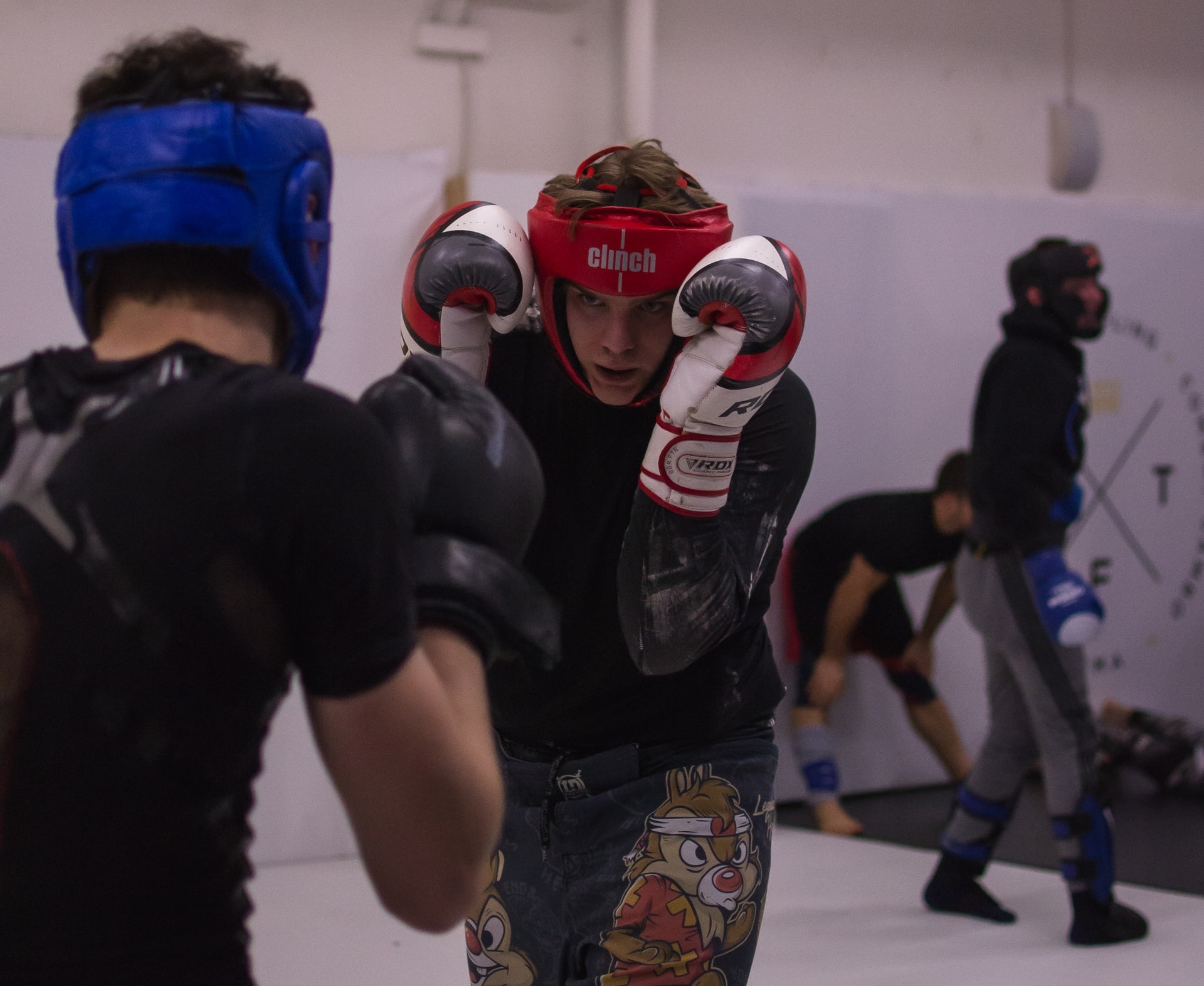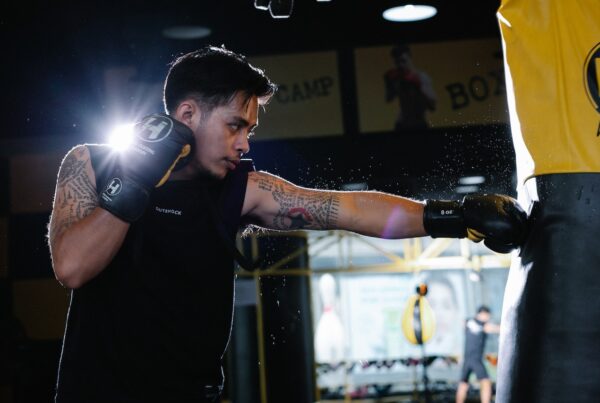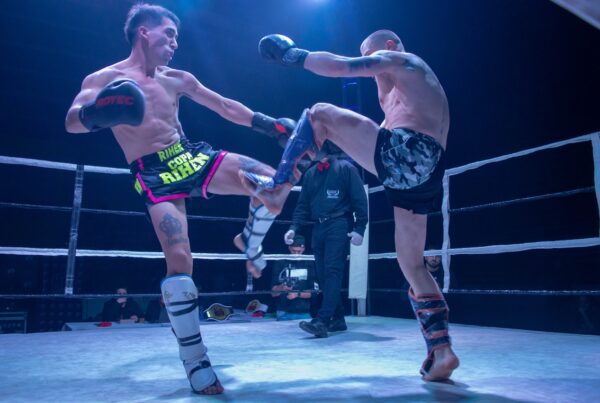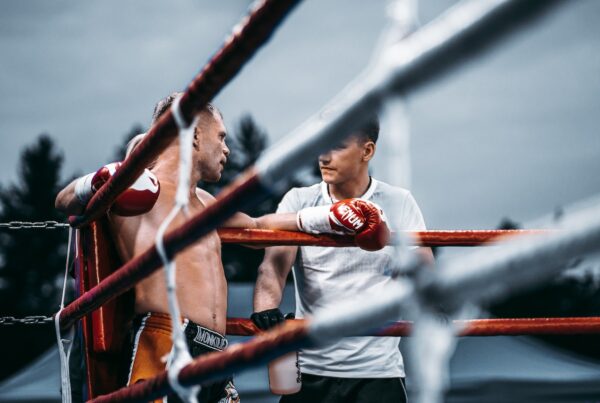To predict incoming punches, you need to look for signs from your opponent. Most commonly, pay attention to your opponent’s body language.
If they begin to tense up in one area, then you know a punch is coming. Or pay attention to your opponent’s feet – most powerful punches are driven from the waist and feet. If you see a twisting motion around the feet or waist, then you know a powerful punch is coming.
I used to wonder how fighters can dodge so effectively and somehow predict incoming punches. After doing a lot of sparring and watching analysis videos on boxing matches (a lot from YouTube), I have learned to at least pay attention to the right things.
When boxing, it’s important to know where to look to predict the next punch. In this article, I’ll teach you what you could look (or focus) at while in a fight.
I am not saying you could suddenly predict everything because it takes lots of practice to predict punches. Even professional boxers cannot predict every incoming punch. But after reading this article, you should be able to notice more things and go from there.
Table of Contents
8 Tips To Predict Incoming Punches In A Fight
1. Look For Patterns
Pay attention to your opponent’s patterns (combos) when they are throwing them. Oftentimes combos are repetitive and you could predict the next punch.
For example, if the opponent is striking with a jab, it is likely that they will throw a right cross next. By watching the opponent’s hand, you can anticipate what they are going to do and prepare yourself for the attack – or even better, a counter.
Watching for combo is highly effective in predicting incoming punches – especially if your opponent is not a professional and doesn’t have much experience. For example, the typical combos like Jab-Right Cross or Jab-Jab-Right Cross are very common, that you can anticipate them.
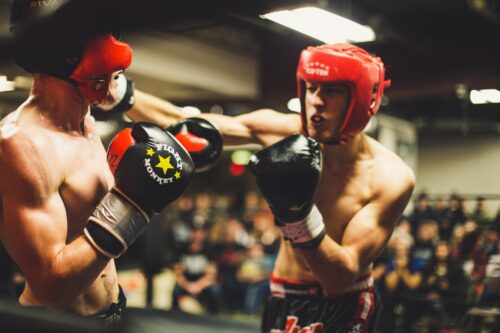
Patterns always occur in a fight. Notice them and prepare for a counter.
2. Look For The Legs
You could also predict your opponents punches by watching how close or far apart their legs are. If the opponent is keeping their legs close to their body, it’s likely they are preparing to throw a punch.
Conversely, if the opponent’s legs are far apart, it may mean they aren’t expecting an attack and are instead trying to set up some type of move.
You could even use this to your advantage. If your opponent’s legs are far apart, use this opportunity to strike. As I said, when the opponent’s legs are far apart, they are likely setting up some moves. While they are busy with setting up, you strike them.
3. Look For Hands Placement
If your opponent apparently lowers their guard, then they are likely looking to strike. Most fighters will lower their guard when they’re about to throw a punch in order to give themselves more room to work. Get ready for this incoming punch and prepare for a counter.
That said, smart opponents could use this as a bait – where they lower the guard on one hand and throw a punch with the other hand. This is pretty common and something you should avoid.
4. Keep your head moving
To predict and evade punches, keep your head light and in constant movement. Always assume a punch to the head is coming. This makes you agile and keep many head shots.
A lot of the time punches are simply not predictable – regardless of how much you watch the opponent. Which is why it is important to always move your head and assume a punch is coming.
While preparing to throw a punch, bob your head from side-to-side and always be on edge. This is the trick most boxers use when sparring or in actual matches. They cannot predict every incoming punch and instead always assume a punch is coming.

Keep your head light and always assume a punch is coming.
5. Look for Evidence of Power
Watch out for the opponent’s weight placement. If your opponent put their weight on the back foot, then likely a powerful punch is coming. Notice this and be careful.
You simply cannot predict every incoming punch, but at least pay attention if a powerful punch is coming. Placing weight on the back foot is the most common evidence of power.
The other is paying attention to the opponent’s combos. A powerful punch is bound to come after a series of light jabs. For beginners, a powerful blow will come after two or three weaker jabs. These points are what I mean as ‘evidence of power’.
The more you spar and practice, the more evidence of power you will notice. One thing that stuck with me was how similar I am to any other opponent. Throwing a powerful punch after two or three jabs was something I would do. If I do it often, most likely other beginners would do it too. So look at your own habits to predict the movement of your opponent.
7. Look for Setups and Threats
One way to predict incoming punches is to look for setups and threats. For example, a fighter might feint an attack in one direction before suddenly turning around and throwing a punch in the other direction.
Or, a fighter may posture himself in a way that suggests he’s about to throw a punch, only to abruptly step back. These small clues can help you anticipate an opponent’s next move and defend yourself accordingly.
8. Watch for Body Language
Another way to predict an incoming punch is to watch for body language. For example, if the boxer is tense and walking very slowly towards their opponent, this may suggest they are about to throw a powerful punch.
Alternatively, if the boxer is smiling or laughing before attacking, this could be a sign that they are planning to take advantage of their opponent’s poor defense. In general, it’s important to pay close attention to the fighter’s body language in order to better defend yourself.

Body language is very important to focus on.
Where To Look & Focus When Boxing?
When boxing, it is important to always focus on your opponent’s punching patterns and body language. This means looking for the telltale signs of an incoming punch (especially heavy punches) and then positioning yourself to defend against it.
I have seen from different articles and forums telling fighters to keep eye contact and pay attention to the opponent’s eyes. I somewhat disagree with this. You don’t have to purposely keep eye contact with your opponent – to predict punches. You could look at the opponent’s eyes to gauge morale (I will talk more about this later).
Instead, focus on the patterns. Memorise their combos, anticipate the heavy punches and set yourself up for a counter. It’s a good strategy to purposely take a couple of light punches to boost your opponent’s confidence. Make your opponent think that his combo is working and strike him back when he’s on auto pilot.
Is Eye Contact Important In a Fight?
Eye contact is important in a fight to gauge morale. If one fighter is looking down at their opponent frequently and not looking to land any punches, it may be a sign that they are not confident in their ability to win.
Conversely, if an opponent is constantly looking up at their opponent with an intent to land punches, it could be a sign of aggression or confidence.
Once you have determined where your opponent is looking, you can start focusing on their eyes. Pay close attention to whether they are blinking or squinting; this may give away whether they are feeling pain or ready to fight.
Additionally, watch for changes in body language – if an opponent starts leaning forward or back more often than usual, this could be another indicator that they are getting ready to throw a punch.
So, while it is important to be aware of your opponent’s movements and what they are doing, it is also important to keep an eye on their eyes. By focusing on these small details, you can increase your chances of winning a boxing match.
How Can You Improve Boxing IQ?
One of the most important things to improve Boxing (or fighting) IQ is to constantly be learning and growing as an athlete. This means constantly working on your game and making sure that you are improving your techniques and understanding of the sport.
Additionally, it is important to have a good coach who can help you develop your skills and guide you in the right direction.
It is also important to stay physically fit so that you have the stamina to last through long bouts, as well as the strength and agility to land punches effectively.
In short, there are a variety of things that can be done to improve your boxing IQ, but the most important thing is to always keep learning and growing as an athlete.
Conclusion
Now that you know where to look, you can start predicting the next punch and plan your defence accordingly! By focusing on these small details, you can improve your chances of victory in a boxing match.
Remember, it is impossible to predict every incoming punch. But by being able to predict the heavy punches and lay in counters, you are on your way to be a boxing pro.

